The Rankins and Richings Park

Malcolm Gray Rankin
Malcolm Gray Rankin, my grandfather, retired from his job at the Tate & Lyle sugar refinery in Silvertown, North Woolwch in 1937 at the age of 69 and soon after made the move from his home in Shooters Hill, South Woolwich to Richings Park. He brought with him his wife Jessie aged 57 and his youngest son Ian David Malcolm aged 23 and they moved in to a house called Cranworth just opposite the Post Office in Bathurst Walk.
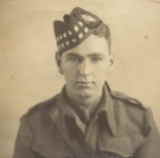
Ian Rankin
Soon after the marriage of their son Ian to Esme Bird in 1939, Malcolm and Jessie moved to a bungalow they called Dunrovin on the left hand side of Wellesley Avenue a few houses from the junction with Richings Way. Some time after that Ian's brother James and his wife Freda with their daughter Wendy moved to another bungalow almost if not next door.
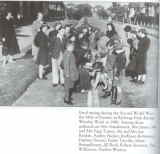
Esme Rankin fundraising in Richings Park about 1950
Family stories refer to a land mine falling nearby during the war and families being asked to move to The Tower Arms Hotel, something Malcolm Gray refused to do. It was said that James Rankin's bungalow suffered some sort of damage during the war.
Malcolm Gray died 19th January 1944 whilst living at Dunrovin and soon after his widow Jessie moved to a flat, No7 Buckfield Court. At some time his son James and family moved away to Norwich.
These events must have happened before I moved to Roborough at the bottom of Wellesley Avenue in about 1946 as by that time Jessie and James had gone from the avenue.
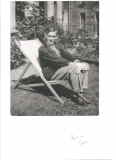
James Rankin b. 1910
I am not aware that Malcolm did much within Richings Park in the short time he was there except he was a keen watcher of the cricket. Jessie on the other hand busied herself in the community one way or another and had a wide circle of friends till failing health necessitated her being moved to a care home near Purley, Surrey where her son Ian had moved to. This must have been about 1967 and she died in 1971.

Jessie Rankin nee Wilson
Ian got involved with Richings Park life, firstly marrying a local girl Esme Bird then helping with the Gardening Club run out of an old railway wagon in the Sports Ground and joining The Richings Players, the Sports Club and The Masons. It was a community that sucked people into joining things and taking part. The cricketers would have a bowls match against the bowlers for example, to everyone's amusement.
In his early days there, The Plaza Cinema was in use for dances as well as showing films and holding plays and shows but it did not survive and closed in 1940 but my father got involved with many of the events that took place there.

Ian Rankin and Esme at a dance at the Plaza
Like many others Ian worked in London and he and a group of other similars would travel up and down on the same trains the 7.54 up and the 5.40 back. He came home as regular as clockwork, there was none of the long hours of today. He also worked Saturday mornings and I was allowed to go with him and play with the huge, by today's standards, calculating machines.
In 1952 Ian's wife Esme died of cancer at the age of 38 in Taplow Hospital. She had been in and out of hospital for some time trying to beat the cancer but it finally took its hold.
After a while Ian got married again to another local girl Daphne Robins who shared his interest in The Richings Players and they played opposite each other in several productions. In the first months of their marriage they lived in his mother's flat in Buckfield Court eventually moving to Iver Heath in about 1955.

Buckfield Court
Despite living in Iver Heath, Ian kept up with the cricket club which I also joined and The Richings Players,as did Daphne and that remained the case till we moved to Kent in about 1959.
Growing up in Richings Park
My overriding impression of growing up in Richings Park was that it was a place where you knew everybody and you knew which houses they lived in and that it seemed as happy and safe a place to grow up in as you could wish for.
I was actually born in Windsor Hospital but I was the first birth the newly arrived Dr Harding was involved with from his practice in North Park, near the United Reform Church and near the site of the old Westfield House School. Before his arrival I believe Dr Cousins or Dr Saint looked after the estate from Iver or Langley.
I was the son of Ian Rankin and Esme, nee Bird.
The first years of my life were spent with my mother and her parents Randolph Bird and Mary nee Dixon, whilst my father was away in the war. Also in the house was my mother's youngest sister Joy who I recall having a horse and a boyfriend Bill Winpenny, who had a motorbike and whom she later married and went north of Aberdeen, to be joined later by her parents. The Bird house was called Reema and was on the corner of Syke Cluan and Bathhurst Walk.
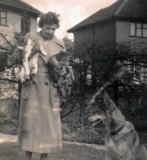
Esme at family home, Reema, Syke Cluan
Being an only child in that household, I was somewhat spoilt, something my father wanted to put a stop to as soon as possible but it was a house full of fond memories, grandpa with an old cyclinder gramophone and a Jews Harp and lots going on. I remember hot fresh bread being collected for us all to tuck into, a chore done by grandpa.
Shortly after my father's return home we moved nearly opposite onto the railway side of Bathurst Walk and not long after that into Roborough, the last house on the right at the Richings Way end of Wellesley Avenue. We rented there from Harold Radford who lived in Bath but would visit regularly to drop in at the Sports Club and go to Old Boy Dinners of his old school, Tonbridge in Kent. Just up from us were two bungalows, one called Dunrovin where my father's parents lived and the other, name unknown to me, where my dad's brother Jim Rankin and his wife Freda lived before he moved to Norwich. In 1944 my dad's father died, whom I do not recall but who was tall and used to watch the cricket with a set of cronies and his widow, my gran, moved to Buckfield Court.
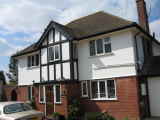
Roborough, Wellesley Ave
There were funny things I remember from Roborough like the times the old barrage balloon was put up, a reminder of the days in the war when they circled the area to protect the Hawkers factory near Langley and a passing Shooting Star US fighter plane. ITMA on the radio, an old wind up gramophone on which I liked playing 78s like The Old Bull and Bush, Workers Playtime on the radio and the arrival of The Eagle comic in 1950, the only comic I was allowed.
I had a lovely time there in that I had playmates on either side, The Rigby family on the right with sisters Christine and Katherine and brother Nicholas. To the left was the house St Boniface where the Wight family lived with son Gerald and daughter Susan. Father Wight was a television engineer pioneer so I had access to TV at a very young age (Muffin The Mule in a room with curtains drawn and a table lamp on). The Wight parents were stalwarts of the Tennis Club. I recall he had a big inflatable dinghy which got used as a mini bathing pool on the odd hot summer day.
When not in our gardens we went to explore in the park. On the corner of Old Slade Lane was a wooded section known to us as the first wood. It was quite small but notable for having a regular woodpecker nesting in a tall fir tree.
Moving futher into the park there was a field to the left that had a magnificent conker tree in it and in which there were held various fetes. Moving down what was the entrance drive to the RIchings Park Mansion, there was a group of about four houses to the right after which, on the right was a field where people like my neighbours The Rigbys grazed ponies.
The Mansion was half ruined and a bit spooky though the temptation to climb up the ditch on the south side to explore the old cellars was too much to resist till we got chased off. Behind the mansion was an off-shoot of the Grand Union Canal from it main route from West Drayton to Slough and beyond.
Just at the corner of the Mansion grounds by the canal was a broken bridge with no footway so the test was to get across on just the remaining framework. Also there was an old hollow tree which became a favourite camp. The canal led down and ended (except for a small overflow waterfall) to what was called the second wood, joined to the first wood by a long tree-lined avenue with a field famous for mushrooms on the Reeves Farm side. We had endless hours of fun playing so safely in those woods and also the Gravel Pits at the end of Old Slade Lane.
Memories of Roborough days include helping the United Dairies milkman Mr Dell do his milkround with his horse and cart later to be replaced with an electric cart, the window cleaners known to me as Hatch and Hales (perhaps their real names) and being called out to "Oi Snowball" as the workers cycled back and forth to the Hawkers Factory (I was very fair haired). I remember the US Air Force setting up a depot at the old airfield, which attracted some of the local girls to hang around near the fences chatting up these exotic vistors. Am I right to think I remember old Mr Anthony from Home Farm pushing a Penny Farthing around? Mr Dell's round was big as he had to start from and return to his depot in West Drayton each day and I remember delivering to Mrs Jarvis at the few houses at the end of Old Slade Lane on the way to the Gravel Pits and past Reeve's farm at one end and the gypsy camp in the field up by the railway beyond the last houses up Bathurst Walk overlooking the Hawkers Airfield at the other. It was the custom to offer Mr Dell a drink at Christmas and I think it was just as well that his horse knew the round and his way home!
Like others I remember the shops well which included a ladies hairdresser where my mother worked next to the bakers, Churms near the station famous for fresh made ice cream and Cooksons for sweets, later Carrolls and sited opposite the dairy shop, Blackmans the fishmongers with its big pike in a case behind the marble slab of a counter, a traditional butcher, Wilkinsons hardware store and Alfred Hunt's upmarket grocery store at the other end of the row of shops from the offices of Alfred King, the estate agent and down from the greengrocers. I thinks it had been called Platts before Alfred Hunt took it over. I presume the Platts was the same group as the one at the top of the High Street in Iver. Rees the chemist was a good old fashioned chemists with big glass jars of coloured liquid in the window. Around there was Stowells off licence. Near the Post Office was a shop on its own called Hoeys which I would call a millners. In the area of the shops was Wilkinsons garage with its petrol pumps and from which Mr Wilkinson ran a taxi service using a big Ford Pilot, which my mother would sometimes use to take us to her sister Marjorie's house in Swallow Lane, Iver (she had married Harold Chadwell of the old Iver Chadwell family of builders, decorators, funeral directors and bell ringers, the bell ringing at St Peters being watched over by the Reverend Cresswell). An important shop was Roberts the grocers which became one of the first supermarket style shops I can recall.
The Rigby family were great fun, I remember games of Mah Jong and trips to Windsor Great Park (The Copper Horse). With my parents I recall cycling to Black Park, trips to Boulters Lock at Maidenhead to help the lockmen and of course the sports club and The Richings Players. My father played hockey as goalie in the winter (I can still hear calls of "Come on The Park" from spectators) and cricket as wicket keeper in the summer and I used to help with the scoring at cricket. I went on to play cricket at the club till we moved to Kent in about 1959. It was one of the centres of Park life with it very active Bowls and Tennis sections and a great place to live backing onto.
My father in particular was keen on dramatics playing many parts over the years for the Richings Players under the guidance of Bill Mead. The Players were very lucky to have the expertise of two top Pinewood Studios make-up artists in the persons of Bob Lawrence and Basil Newall to call upon both of whom were excellent actors as well. An enduring memory of The Players was the role of Eddie Dobin as stage manager who changed a bare stage to some great sets with wires running everywhere which he somehow kept track of and clearing up on a Sunday morning after a show in which all took part
dismantling, breaking up and putting away what could be re-used in the garages at The Tower Arms pub run by Alf Brock and his family. In addition to the plays there were the annual Pantos in which all sorts took part, I think under the eye of Ethel Darsley amongst others and to the accompaniment of Minnie Robins on the piano (she was later to become my stepgrandmother).
Whilst at Roborough I joined the cubs with Anthony Lucas-Smith amongst others at the meetings held in the small huts behind St Leonards Hall. I later joined, briefly, the Scouts with scoutmaster Nigel(?) Reece. Whilst in the cubs I did my bit for Bob-a-Job, which the locals were happy to contribute to for their "job", one I remember was weeding Mrs Robinson's front path, she lived just up from us, under the watchful eye of her African Grey parrott, a very liked local feature. Talking of cubs and scouts, I remember a group of them going round with a cart collecting jumble and I can see the pretty, laughing face of Maureen Noble to this day.
After starting school at Westfield (fees £6 per term) I got moved to the village school in Iver to toughen me up. Westfield had a hut at the back in which things like the Christmas play were held and sports day was held in the back garden.
The only people I remember from Wesfield were Miss Overton, the headmistress and Ian Scott, with parents Ronald and Fay and brother Gordon. They lived at the Tower Arms of Somerset Way, on the right going down. Fay was something to do with dancing and Gordon was a very good cricketer. Some many years later my stepmother Daphne nee Robins was visiting Fay and she just did a small shudder and died as they were sitting chatting!
To get to the school in Iver I remember there was a school bus that a group of us caught at the corner of Syke Cluan and Richings Way. It must have been used for the return journey but I remember walking home at odd times.
I then went to Rutland House School in Hanwell which involved catching the 7.54 train, changing at West Drayton as it went on fast to Paddington to a more local train. Rutland House soon moved to Hillingdon which involved the same start to the journey but a 223 bus from West Drayton to Hillingdon Hospital and a good long walk to Hillingdon Church. There was gang of us doing this including Roger Birch, who had a sister Cherry-Ann, John Biddle who had a sister Christine and Timothy Berry. School ended at 4.45 and I recall the walk back in the dark to Hillingdon Hospital to catch the bus home. I can't imagine that happening today.
The Biddle/Birch friendship covered endless games of football at the Rec', (we always went "up the Rec'" never "down the Rec'") and table tennis at Roger Birch's. It was there that I watched Jim Laker get his 19 wickets against Australia in the 1956 Test.
In 1952 my mother Esme died and my dad and I went to live in his mother Jessie's flat, No7 Buckfield Court. Whilst there, I grew up overlooking the railway from my Nan's small patch of garden which she looked after closely. Not only was it on the main GWR line with its express trains like the Cornish Riviera but it also had coaling sidings and I would go to sleep to the noise of the shunting engine and the fusillade of clanging buffers as the trucks were manoeuvered about the tracks. The GWR was famous for its Castle, King and Britannia class engines, splendid machines and a trainspotter's dream (I was one). The line also saw the short lived gas turbine trains numbers 18000 and 18100.
In the years before we moved to Iver Heath in about 1956 after my dad remarried (Daphne Robins), I recall cycling over many times to the picket fence and huts by the side of the A4 to see the planes in what was Heathrow Airport, a particular time being to go and see the giant Bristol Brabazon making a visit there, alas the last one as the plane was soon after scrapped as a white elephant.
At about this time I recall that the 459 bus started from The Tower Arms to Uxbridge in what I believe was a reopened service. It was poorly used but useful for getting to Uxbridge Open Air Swimming Pool when it was not closed for polio outbreak risks, an event that happened at some time every summer. It was a great place to go however.
Whilst living in Buckfield Court, I became friends with Tony Gilman and his parents who lived just by the Post Office in Bathurst Walk on the Post Office side. At the back of him was the Shawcraft factory and we used to go and watch the men making these amazing plane models used by airlines to promote their wares at exhibitions or just travel agents, humble beginning of what it developed into. I can recall the smell of the paint spray vividly. Tony and I would play endless games of cricket in the rec using the trees along the tennis court side as wickets up against houses of such as Bill Beck. Whilst we were doing that I remember Stephen Hyde and Martin Woodwood doing likewise with a very complicated game with no stumps and runs being decided on a judgement of where the ball went after being hit, how hard and its proximity to a field of imaginery fielders.
Martin lived in the house just to the left of the entrance to the sports club, with a father famous for going to work in a winged collar and looking very severe. Martin unfortunately died young. Steven lived in Bathurst Walk, near the Norridge family with whom I played yet more endless games of cricket.
My father insisted I help my Nan and I was not allowed out till 10.00am each day after having done the heavy shopping, which was fine by me but one job that was not such fun was taking shoes to be repaired to Mr Goff in West Drayton, which I did on my bike, dreading what I thought of as a steep hump backed bridge over the Colne by the mill. That area and the part of the park by the canal used to flood most years, the floods in the park being great when they froze over. 1947 was a very cold winter and not only did the floods freeze but also the canal. The snow allowed the making of giant snowballs on the sports ground by the likes of Nigel Aves and John Reece-Jones, people I regarded as gods being that much older than me and heroes of the sports club.
Just before I moved to Iver Heath, the Queen Elizabeth Terminal in the centre of Heathrow was opened accessed by a tunnel under the runways. This tunnel had two small tunnels on either side of the two dual carriageway tunnels and at the beginning, those tunnels were for cyclists and I remember regularly cycling through them for a day out at the central terminal.
In the promotion of Richings Park, much was made of the rail link at Iver Station and it certainly was a big feature for the lives of Richings Park folk acting as the way to go to work, shopping or travel generally. I used it to go to school by train where I remember the HMV factory by Hayes Station, the smell of coffee passing the Nescafe factory also at Hayes followed by the smell of oats from the Quaker Oats factory at Southall. Southhall also was the site of the big AE bus factory where you could see the finished buses lined up for distribution. The line into Slough gave access to the shops of Slough of which there were many but the journey took one past the Passold Ladybird brand of knitwear at Langley. Slough gave a link to Windsor which had the Theatre Royal for plays and pantomimes, Fullers for tea and Fullers Mints and for me the dentist Mr Talmadge in Praed Steet, down from The Castle.
There is a lot I have left out I am sure but I hope you can see that my early life in Richings Park was about as good as it could get, a community where so many people were able to help others like the team of volunteers who turned up to dig the trench in which to lay a new electricity cable for the new sports club pavilion, people like Mrs Coulter at the top of Somerset Way who would alter one's clothes, etc etc, the list is endless like the names that come back to at randon, Jenkins with a giant poodle at the top of Wellesley Ave, Peggy Dobin, Richard Wells, Christine Biddle, Don Kenyon, John Moreton, Barry Budden, Derek Norman and family, Michael Brett, Norman Creek .......